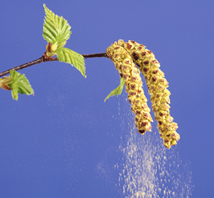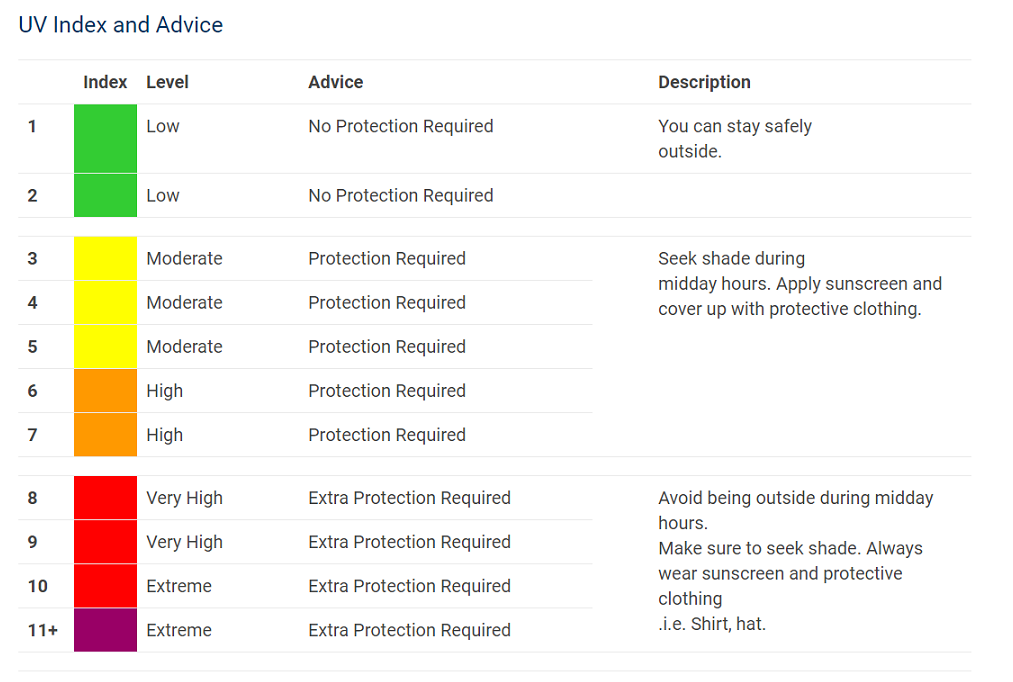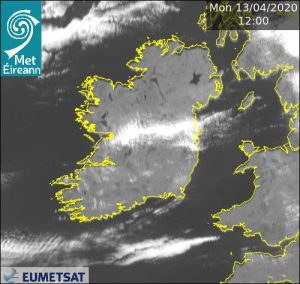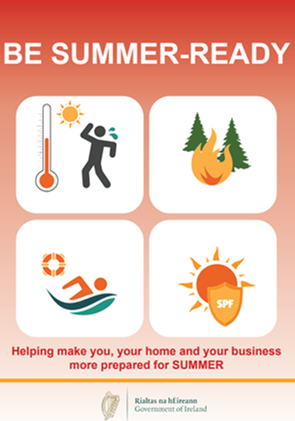Today Met Éireann has begun the Pollen Forecast and Solar UV (ultraviolet light) Index for today, tomorrow and the next day. This will be available in the Regional Forecasts of our website and app until September.
Pollen Forecast
Birch tree pollen will be in peak period in the month of April, with a high risk on dry, sunny days, the greater risk in the East of the country. Ash pollen will be airborne, with a moderate risk again mainly in eastern areas. The season for tree pollen will continue with oak pollen from mid-April to mid-May.
The grass pollen season will start from around mid-May, with the peak period likely in the middle two weeks of June.
The Pollen Forecast is provided by University of Worcester, UK and it will be available daily on the Regional Forecasts of our website and app. For example, the Leinster Forecast can be found here https://www.met.ie/forecasts/leinster which contains today and tomorrows forecast for Leinster and link to the full Pollen Forecast here. This 3-day forecast will be available with a designated risk of Low, Moderate or High for each region and is updated at about 11.30am daily. Other provincial forecasts are available in the Forecast menu of our website, or on the app by searching for a location in that region. More information on the Pollen forecast is available in the Weather Conditions section of the Be Summer-Ready pdf below, page 4.
Solar UV Index
The Solar UV Index level for your location is included in each of our Regional Weather Forecasts now and continues until end of the summer months. It is sourced by Deutscher Wetterdienst.
As we approach the midpoint of spring, the sunlight we receive becomes noticeably stronger, with harmful UV rays causing sunburn. People may be surprised to get sunburn in early April, but it’s helpful to remember that the sun is as strong in Ireland in April as it is in August. Sunlight is at its strongest at the summer solstice in June, then it is as strong in May as it is in July, as strong in April as it is in August and so on. So even though it may not be as warm in April as in August, the sun is just as strong, and you will still burn when exposed to the sun.
Also, the ozone hole over the Arctic is at its biggest (most damaging) at the end of winter and during spring, allowing more harmful UV rays to reach the surface. More information on this and the recent dry spell is detailed in the latest update to our Meteorologist’s Commentary and the Climate Report.
The UV Index page has more detailed information on how to protect yourself during the warmer months, along with the measurement from one of our Brewer Spectrophotometers (an instrument which measures ozone, and computes the UV level).
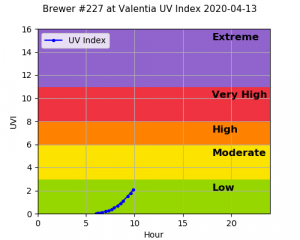
This is an example of the UV measurement from one of our Brewer Spectrophotometers in Valentia Observatory in Co. Kerry.
Be Summer-Ready
The Be Summer-Ready booklet (click image above to access it) is part of the Government of Ireland initiative to provide information to the general public on issues which may affect them during the summer months in Ireland. It is published by the Office of Emergency Planning, on behalf of the Government Task Force on Emergency Planning. There is more information and useful links on the website gov.ie/summerready . Met Éireann contributed to the Weather Conditions section to this booklet, page 2-4.
